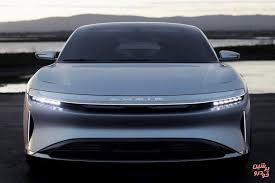


Five years ago, it was difficult to make the case for electric vehicles (EV). Electric cars were expensive, the vehicle range was too short, and there was a dearth of charging infrastructure. Talk centered around the enduring nature of the internal combustion engine. Today, we are at a tipping point in the adoption of EVs.
The highest value automaker in the world is now the Palo Alto-based Telsa, dwarfing the giants of the industry, despite selling only a fraction of the volume of cars. In Europe, electrified vehicles (battery electric vehicles and hybrids) accounted for almost 20 percent of sales last month.
A shift to electrification is the number one trend in the automotive industry, says Dunne. China is “king of the hill” right now, and accounts for approximately half of global EV volumes. While Japan and Korea are also actively developing EVs, the most exciting story in Asia is start-up VinFast in Vietnam. Founded in 2017, VinFast is the brainchild of Vietnam’s richest man, Mr Phạm Nhật Vượng, and is rumoured to begin production on Vietnam’s very own electric SUV as early as next year, says Dunne.
The rest of Southeast Asia is still relatively quiet on the EV front, with a continuing emphasis on gasoline and diesel-powered vehicles. A lack of infrastructure to charge vehicles is a key limitation. “I don’t see big penetration numbers in Southeast Asia in the next five years,” says Dunne.
Automobile manufacturers used to think in terms of selling a “unit”. Moving forward, automakers will need to act like a technology company. A car will basically be a computer on wheels, says Dunne. The second major trend highlighted by Dunne is connectivity, which is set to unlock the next big revolution — connected car capabilities.
Automakers are increasingly looking at how to sustain revenues after a person has purchased a car. As connectivity improves, Dunne foresees huge opportunities in infotainment – streaming, texting, watching movies and e-commerce. Infotainment will flow through the centre stack screen as automakers and tech companies try to turn your car into the next iPhone or iPad — with a seamless experience from home to vehicle. The big tech companies are highly active in this space, says Dunne. Apple may be the market leader, but Google is particularly aggressive, he says.
With an estimated 1.5 billion passenger cars on the road, the internal combustion engine is not going away anytime soon. However, connectivity gives rise to an extremely complicated aftermarket and a transition towards diagnostic solutions. A typical car repair may require one-part mechanic, and two parts computer technician.
China has the edge on the rest of the world when it comes to the mouth-watering trend of autonomous vehicles, says Dunne. The Chinese Government’s ability to knock down barriers to commercial application means China will surely leapfrog democratic countries in the adoption of this technology. In the United States, each state has its own set of rules creating a difficult regulatory environment.
For many years, companies were content to put all their supply chain eggs in one basket – China. However, tensions between the United States and China have reached boiling point. “The relationship has not been this bad in 45-50 years”, says Dunne.
While companies are unlikely to admit they made a strategic blunder, Dunne indicates there has been a change in mindset “at the top of the boardroom”. Companies are moving fast to reconfigure their supply chains. It may not be as efficient or profitable but it is probably safer long-term. “I’m getting calls from clients saying how do we diversify our investment and our supply?” Southeast Asia will be a big beneficiary of that Trend, he says. The Japanese government is providing incentives to Japanese companies to move their plants out of China, says Dunne. There is a possibility there will be two supply chains globally, one for China and one for the United States and all of its friends.